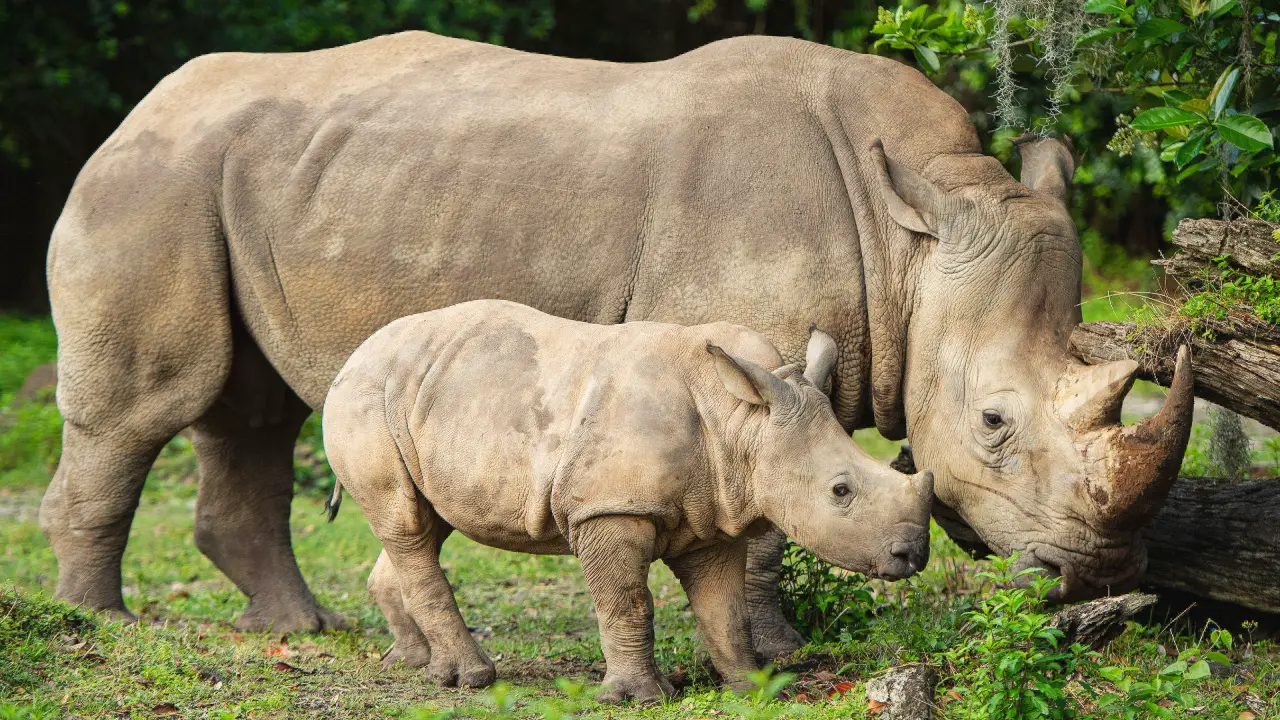4-month-old white rhino calf Logan made his debut on the Kilimanjaro Safaris savanna at Disney’s Animal Kingdom this week. She joined her mother, Lola in the attraction. She is the third rhino that has made a debut on the Harambe Wildlife Reserve in the last 13 months. This was also the first time that rhino siblings Ranger, Mylo, and Logan were found on the savanna together.




The arrival of baby rhinos started with Ranger, who was born at Walt Disney World in October 2020. This was followed by Mylo joining the crash (herd) in September 2021. Logan was born in November 2021. Her name is a mix of both of her parents’ names, Lola and Dugan.
The birth of these three rhinos marks a major achievement for the Disney team at Disney’s Animal Kingdom, along with the rhino population in managed care. The new rhinos continue to provide more opportunities to learn about the species and to help them globally.
The process of bringing a rhino onto the savanna is quite in-depth. Disney shared what the process looked like this week on the Disney Parks Blog.
Selection through the Species Survival Plan
The process begins with lots of planning and logistical preparation. Many factors influence the pairing of rhinos through the Species Survival Plan overseen by the Association of Zoos and Aquariums to ensure the responsible breeding of endangered and threatened species in managed care. The genetic diversity of the rhinos selected is one of the most important factors, and pairing genetically unrelated individuals helps ensure a healthy animal population for generations.Animal Nutrition
Our team of animal nutritionists monitor the diets of all animals in our care to ensure they receive the nutrients they need. Once the rhinos are paired, their diets can be further adjusted as needed for pregnancy, lactation and growth.Endocrinology
Before any introductions are made, our team of animal endocrinologists monitor specific hormone patterns that change after ovulation and throughout the rhinos’ pregnancy. This tracking is possible because the rhinos are trained to voluntarily participate in their own care, allowing our team to collect blood samples and feces to monitor hormones related to ovulation and pregnancy. Once the appropriate timing is determined, breeding can begin through a carefully controlled process.Veterinary Care
Our animal health team works with endocrinologists and animal keepers to monitor the animals throughout their long pregnancies. Quick fact – rhinos have one of the longest gestation periods of any animal! During this approximately 16 to 18 months, the health of the mom and baby are monitored through regular checkups and ultrasounds. Through these ultrasounds, the team was able to watch Logan grow from a ball of cells to the 160 pounds she weighed at birth.Animal Care and Training
Through training sessions, our animal care experts work with each mom individually to participate in regular checkups throughout her pregnancy. This helps ensure the health of mom and baby.Once the rhino calf is born, mom and baby will spend months backstage bonding. During this crucial time, the keepers will ensure the calf is nursing and growing. This time also allows keepers to focus on each animal and teach important training behaviors so the baby rhino is set up for success and social life on the savanna. Once the calf is ready, keepers work with the rhino calves to slowly introduce them to the rhino crash and the many other animals on the savanna.
Rhino Conservation
White rhinos are a very social species, and they’re constantly learning from each other. Just as they pass along important behaviors like sparring and wallowing in the mud, with each successful rhino birth our team is able to better understand and share vital information on the many dynamics of rhino fertility. These learning experiences lead to an even higher quality of care for this special species and can be put into practice to help future rhinos born in managed care as well as their counterparts found in their range countries.
What do you think about the arrival of Logan on the savanna at Disney’s Animal Kingdom? Are you excited about the progress that is being made with the white rhino species at Walt Disney World Resort? Share your thoughts and opinions in the comments below!






